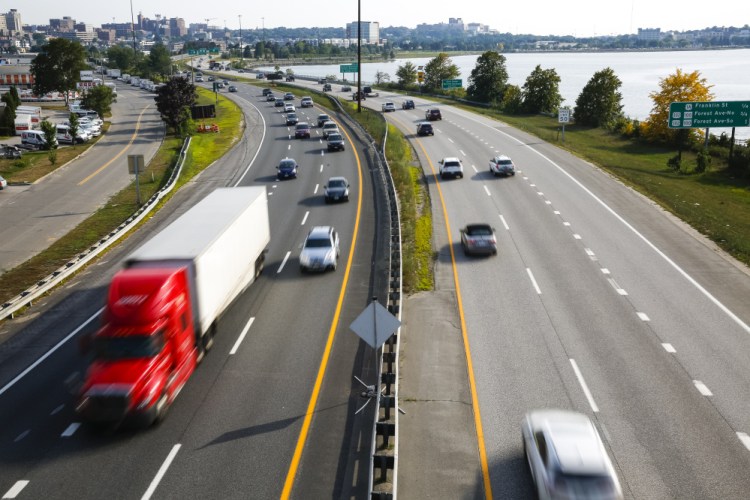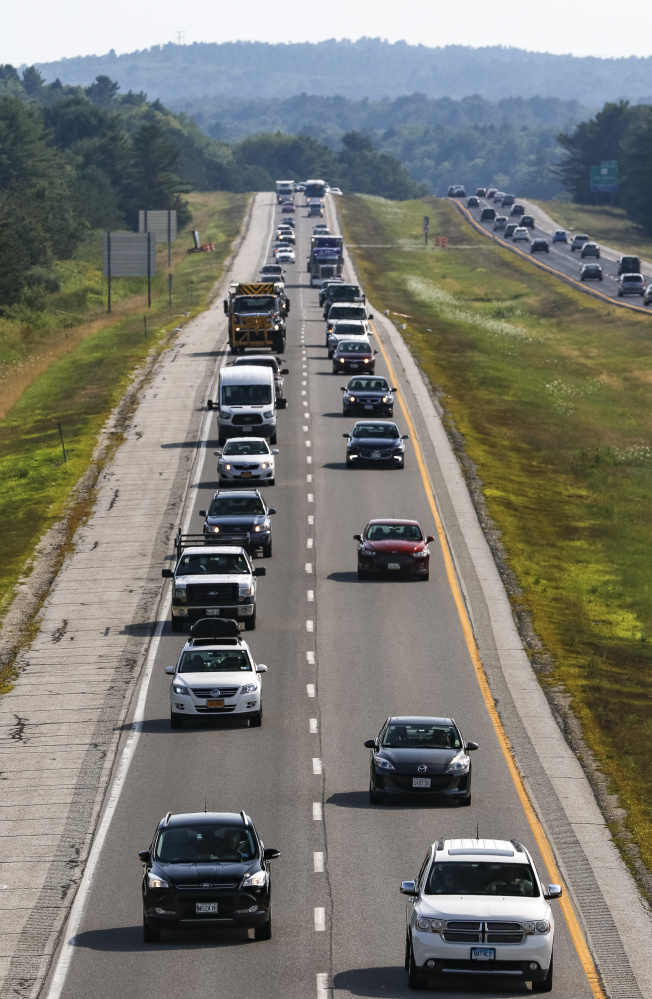If you have the feeling that traffic this summer has been heavier than usual, you’re not imagining things. And it hasn’t been just the summer.
“Every month in 2016 has been a record month for the entire history of the turnpike,” said Peter Mills, executive director of the Maine Turnpike Authority.
The number of drivers using the turnpike is on track to break the record set in 2015, and traffic on some state roads is heavier than it has been for almost a decade, according to figures from the turnpike authority and the Maine Department of Transportation.
Low gas prices, hot and sunny summer weather, and increasing numbers of tourists are factors driving up traffic. That’s good for tourism and suggests a healthy economy, but brings headaches like congestion and traffic jams.
As of this month, there were 49 million toll booth transactions on the turnpike, a 6 percent increase over the same period in 2015. Transactions do not directly translate to traffic, but are a reliable indicator for the volume of cars on the highway, Mills said.
About 8.8 million drivers have used the York tollbooth so far this year, an increase of 7 percent over 2015, data from the turnpike authority shows. The actual number of vehicles passing through is much higher, Mills said, because the York booth doesn’t record transactions from northbound Maine drivers using the E-ZPass electronic toll transponder. Transactions by those drivers, who Mills said could represent another 2 million vehicles, are recorded when they exit.
HEAVIER TRAFFIC ON MANY ROADS
With record travelers come record revenues. The authority collected $60.7 million in tolls during the first six months of 2016, about $3.6 million more than the same period last year.
Traffic on state roads also is increasing. The Department of Transportation has about 140 permanent traffic-monitoring sites scattered across the state, and almost all show an increase over last year. Debbie Morgan, an MDOT traffic-monitoring supervisor, said 2015 was the first year she saw an uptick in traffic after years of flat numbers that began around 2008.
“In 2015 we started to see the first real increase in traffic statewide, and this is continuing into 2016. But in some cases it is not back to when it was at an all-time high,” Morgan said.
An average of 35,290 vehicles a day traveled through Kittery northbound on Interstate 95 through June this year, a 7 percent increase in traffic over the same period last year.
That trend holds in many areas of the state. The I-395 westbound exit on Main Street in Brewer, east of Bangor, recorded 16,250 vehicles a day in 2015. That was the highest number on record – and traffic is up 5 percent through the first six months of this year.
Westbound traffic on I-195 in Saco is 6 percent higher than last year at this time. And in Trenton, the average daily traffic over the Thompson Island Bridge to Mount Desert Island and Acadia National Park was 9,656 vehicles in June, a 7 percent increase over last year.
LOW GAS PRICES A MAJOR FACTOR
Pat Moody, from AAA Northern New England, said low gas prices explain the number of drivers on the road this year. According to AAA, the current average price for a gallon of regular gas in Maine is around $2.15, about 44 cents less than a year ago.
“The lowest gas prices in 12 years, that’s the biggest piece of it,” Moody said. “Slight improvements to the economy and low gas prices.”
Low gas prices also might translate to more tourists coming to the state. Total visitation to Maine increased from 29.8 million visits in 2013 to 33.8 million visits last year, according to the Maine Office of Tourism. Spokeswoman Jennifer Geiger said that although the agency doesn’t have visitation estimates for this year, she expects another increase.
“Over 70 percent of visitation to Maine is by car, so the low cost of gas is a positive factor for tourism,” she said.
While tourism certainly increases traffic on the turnpike, Mills said rising numbers of commuters and commercial vehicles also are making their mark.
“One thing we are seeing is a lot more short trips. There are a lot of people in Greater Portland who have discovered the interstate as an alternative city street,” Mills said.
The traffic should also be regarded as a barometer for Maine’s improving economy, he said.
With so many cars on the road, traffic headaches are inevitable. Predictably heavy traffic through Portland on I-295 can make morning and evening commutes a hassle. The same is true on the turnpike.
“We certainly have had more heavy traffic alerts this summer, especially through the Portland area,” and particularly on Friday afternoons, said Erin Courtney, a spokeswoman for the turnpike authority.
Send questions/comments to the editors.




Comments are no longer available on this story